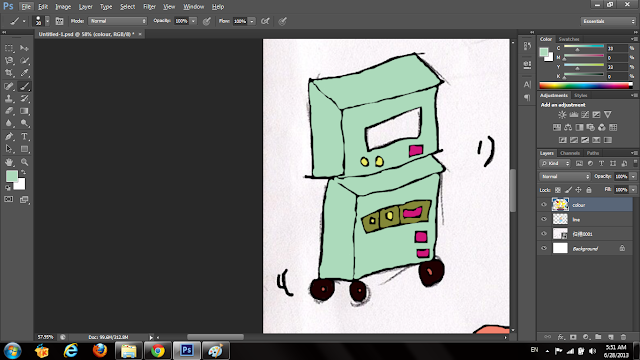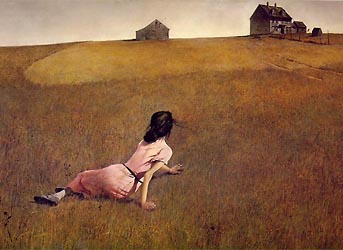Summary:
The development and improvement of
technology has greatly improved our lives. It has led to a far better, easier
and very comfortable life for the people. There are various ways through which
technology has changed our lives and this includes the following:
The rise of the internet technology
has improved our daily lives in very many ways. The world business and trade
has become very fast, easier and more reliable. You can now transact business
with a person who is very far from you without any difficulties. It has become
easier to book railway tickets, bus tickets and even flights at the comforts of
your home without having to move. The payment of bills and other accounts
related jobs of every business entity is easily managed by the available online
facilities. Financial institutions and banks have introduced online internet
systems which makes life easier. The introduction of ATMs has made it very
possible to withdraw money at anytime of the day. Also it has become easy to
advertise through the internet and thereby promoting the business in a faster
way.
Banks and other financial institutions
are now filling data in the computer instead of doing it manually as they used
to do in the old days. This makes it easier to fine the name of the customer,
address, email address, birth date, phone numbers and even the location. Also
the clients can get a very quick access at their account balances by logging in
to the bank website. With the rise of computer technology, credit cards and
other plastic money which are very useful especially when one do not have cash
at hand or when one is ordering online products and or services have
manufactured.
The impact of technology is a very
good classical example of the way our lives has improved due to technology. The
ancient people did not get the chance to learn in interactive classrooms with
projectors and even 3D images. Computers, PowerPoint presentations and also the
internet technology has brought about teaching in a very different dimension.
The education system has become computer dominated and has gone beyong
notebooks and blackboards. Nowadays it is more possible for audience and
students who are located in very different geographical areas to get access to
lectures which are being conducted through video conferencing. Also many
websites are promoting the online tutoring which means you do not have to
attend to a classroom to get educations, you can do it at the comfort of your
home.
Social networking websites are the
order of the day nowadays. Websites like Twitter and Facebook have given birth
to the new concept of social media marketing. The business networking and
personal online dating have greatly been improved. Meeting the new people
online has given way to the rise of the billion dollar industry of dating.
Communication has been made easier for
example the internet has brought email and chatting facilities. Instead of
sending letters to respective destinations, it is very easy to send an email
which will be received instantly.
I believes that social media is all well and
good but should be used within reason. If used without self-constraint, it
could result in addiction. Inspired by the side of the people around all the
time that they are holding the touch are electronic products, have ignored
around a lot of things worth seeing, including the side with the people who
cherished ignored. Such findings have given some form of inspiration to create
a piece of artwork and the steps detailing its creation can be found below.
Artwork by: Tang Suet Yin
Student ID: B1300879
Early Sketch
The first sketch was not clearly drawn
and felt that it could not convey the message clearly enough.
Design Step by
Step Process:
I used this as the underdrawing for
this design project. The images that follow depicts the process of designing
and colouring this final project for this semester.
Step 1:
I did the first step is scan the
pictures into the computer and then use photoshop to dran up all the line.
Step 2:
This is all the line I have drawn all
the way of this picture.
Step 3:
Then, I put a man's head and looks are
on the color.
Step 4:
Then slowly other parts (hands, pants,
clothes, shoes) are also coated color.
Step 5:
After that, I put behind the big stars are painted
yellow. I pay a lot of attention in adjusting the settings for the brush in
order to get the correct tones for the colors in this part.
Step 6:
I created different layers when
painting so that it will be easy for me to do any editing later on.
Step 7:
I painted the top left and right’s
lighting with pink and purple.
Step 8:
Then the upper left and right corners
of the clouds were painted blue color.
Step 9:
Next, I put the mobile phone (Iphone)
and wires coated with the different color.
Step 10:
Then continue the electronic products
(Ipad) also painted color.
Step 11:
Side of the disc also painted dark
gray and light gray.
Step 12:
Laptop or Notebook also no exception
to paint the color.
Step 13:
In addition, a mobile phone then
slowly painted colors, first coated color with the button and then help shell
coloring.
Step 14:
That audios are also coated with three
different colors of deep and shallow.
Step 15:
Then coloring that can move HighFive.
Step 16:
The final step is coloring the
background and I am choosing the correct colours for the icons and adding the
'smoke' effect by using brush and smudge tool.
Step 17:
Now is the probably one of the tricky
parts in completing this design project. I had to constantly adjust the opacity
for the layers I've created in order to create a realistic effect to show that
is actually appearing as a reflection. Finally, I did the final touch-ups and
it's done!
Final
Art Work:
This is the LAST WORK after finish all
the steps.
Artist Statement:
In recent
years, technology has really taken an importance in the daily lives of
practically every person in the world.
Technology
has become a presence in just about every moment of any person's life on any
given day. How many people do you know that don't walk around with a cellphone
all the time, or don't own a computer, or don't have an Ipod or other music
player? Most people are truly addicted to their technology and couldn't imagine
a day going by without access to the internet, instant communication, etc.
As the world
progresses, technology seems to be steadily taking control of the planet. In
the past, the idea of the cyborg was more or less a humourous topic. But as
technology progresses, becoming a cyborg is actually a possibility for a human
if they desire it.
Technology
has become more than convenience, progress, luxury, or even just a commodity.
It has become an addiction, a necessity and an obsession. Throughout my work, I
will be looking at how this obsession and connection with technology affects us
and our lives as people.
References:


















.jpg)








